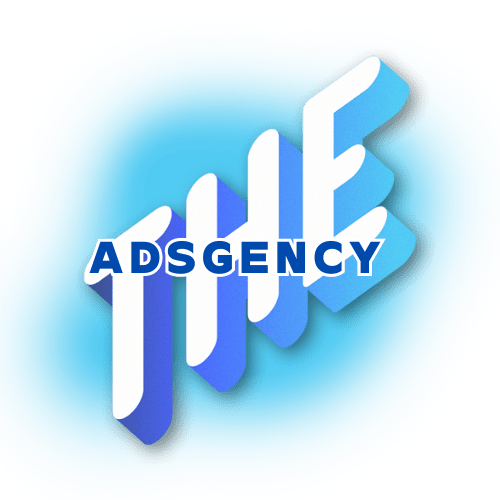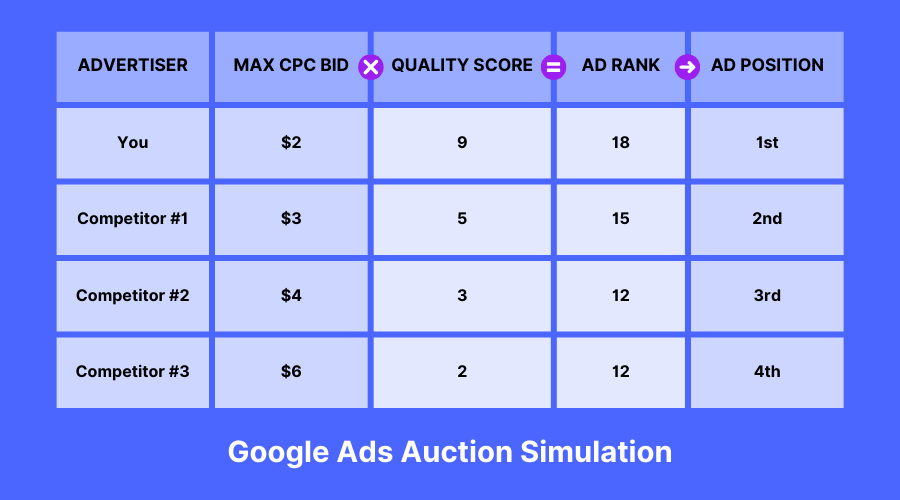Google Ads can be a powerful tool for beginners to achieve massive success. However, knowing where to focus your efforts is crucial. This guide outlines key strategies to help you compete effectively, even as a beginner. For a deeper dive into Google Ads strategies, check out our detailed article on Google Ads Basics.
Win Where You Have an Edge
Understand the Competition
Google Ads is a competitive space where advertisers vie for impressions, clicks, and conversions. As a beginner, you may not have the experience to optimize every technical setting, but you can still outperform competitors in other critical areas.
Key Areas to Gain an Edge:
-
Superior Offer: A compelling offer can compensate for a less sophisticated campaign. Learn what your industry’s average conversion rate it in our guide.
-
Better Product/Service: More features, durability, or aesthetics.
-
Competitive Pricing: Discounts, promotions, or better value for money.
-
Excellent Customer Service: Encourages repeat customers and referrals.
-
Flexible Terms: Payment plans, free delivery, or better return policies.
-
Strong Guarantees: Money-back offers or extended support.
By improving these factors, you can stand out even in a crowded & competitive market.
Pay More Per Customer & Still Win
The Myth of the Lowest Cost Per Acquisition
Many believe that the lowest cost per conversion guarantees success. However, businesses that maximize Lifetime Customer Value (LTV) can afford higher acquisition costs and still remain profitable. For more insights, read our article on How Much Google Ads Cost.
Strategies to Increase LTV:
- Increase Average Order Value: Upsells, bundles, and add-ons.
- Boost Repeat Purchases: Retargeting ads, email/SMS marketing.
- Introduce Subscription Models: Recurring revenue increases stability.
- Reduce Churn: Improve customer support and engagement.
- Encourage Referrals: Offer discounts for recommendations.
Understanding and leveraging these tactics will give you a significant competitive advantage.
Borrow Brand Value for Higher Conversions
Leverage Influencers and Known Entities
If you lack established brand recognition, you can “borrow” it by incorporating known figures into your marketing strategy. A great way to do this is by collaborating with industry experts or using customer testimonials.
Methods to Boost Brand Value:
-
Influencer Collaborations: Featuring industry-relevant influencers in ads.
-
Using Testimonials: Social proof from well-known figures.
-
Brand Association: Partnering with recognizable companies or organizations.
Another way of increasing your brand notoriety and visibility is to use the Google Display Network to run ads. These ads will present you brand to more potential customers, at a (usually) lower cost than a regular Search campaign. If you are interested in knowing more about that, check out our guide on How to Use Google Ads Display Network.
Stick to Search or Performance Max Campaigns
For beginners, it’s best to start with Search Campaigns as they are easier to manage. However, if you have existing assets (images, videos), Performance Max campaigns can provide broader reach and automation benefits. If you want a step-by-step guide, check out Search vs. Performance Max: Which is Right for You? This is for you to discover, based on your business model, industry, location and website.
Set Realistic ROAS Targets
Beginners often expect an unrealistic return on ad spend (ROAS). Instead of aiming for 10x or 20x returns from the get-go, focus on sustainable profit margins. A 2x or 4x ROAS can still be extremely profitable, especially when combined with a strong LTV strategy. The goal is to be realistic at the beginning and to increase your margin regularly, gradually. If you don’t, you will end up spending all your budget trying to reach a goal Google can’t even offer you at the moment. It is a machine learning experience, and Google needs data to work, so start small, feed good data to Google and then reach for better results. For further guidance, check out The Difference Between ROAS and ROI in Google Ads.
Learn the Fundamentals
For a complete walkthrough of setting up and managing Google Ads campaigns, check out our beginner tutorials that cover:
-
Keyword targeting
- Copywriting for Google Ads
-
Conversion tracking
- Fixing low performing campaigns
Read our full guides on Google Ads for Beginners to get started the right way.
Conclusion
Success in Google Ads doesn’t come solely from technical expertise. By focusing on strategic advantages such as superior offers, higher LTV, and brand value, even beginners can outperform experienced advertisers. Apply these tactics and watch your campaigns thrive! For more expert advice, get Google Ads guidance with our FREE 30 min call.
FAQ – Google Ads For Beginners
How much budget should I start with for Google Ads?
For beginners, a budget of $10-$50 per day is a good starting point, depending on your industry and competition. It’s best to start small, test different strategies, and scale once you find what works.
How long does it take to see results from Google Ads?
Most campaigns take 1-2 weeks to gather enough data, and 4-6 weeks to optimize for consistent performance. Factors like competition, budget, and optimization strategies impact results. Patience and continuous tweaking are key.
What is the best campaign type for beginners?
The best campaign type for beginners is Search Ads, as they are straightforward and show ads to people actively searching for your product/service. If you have visual assets, Performance Max can also be a great option.



